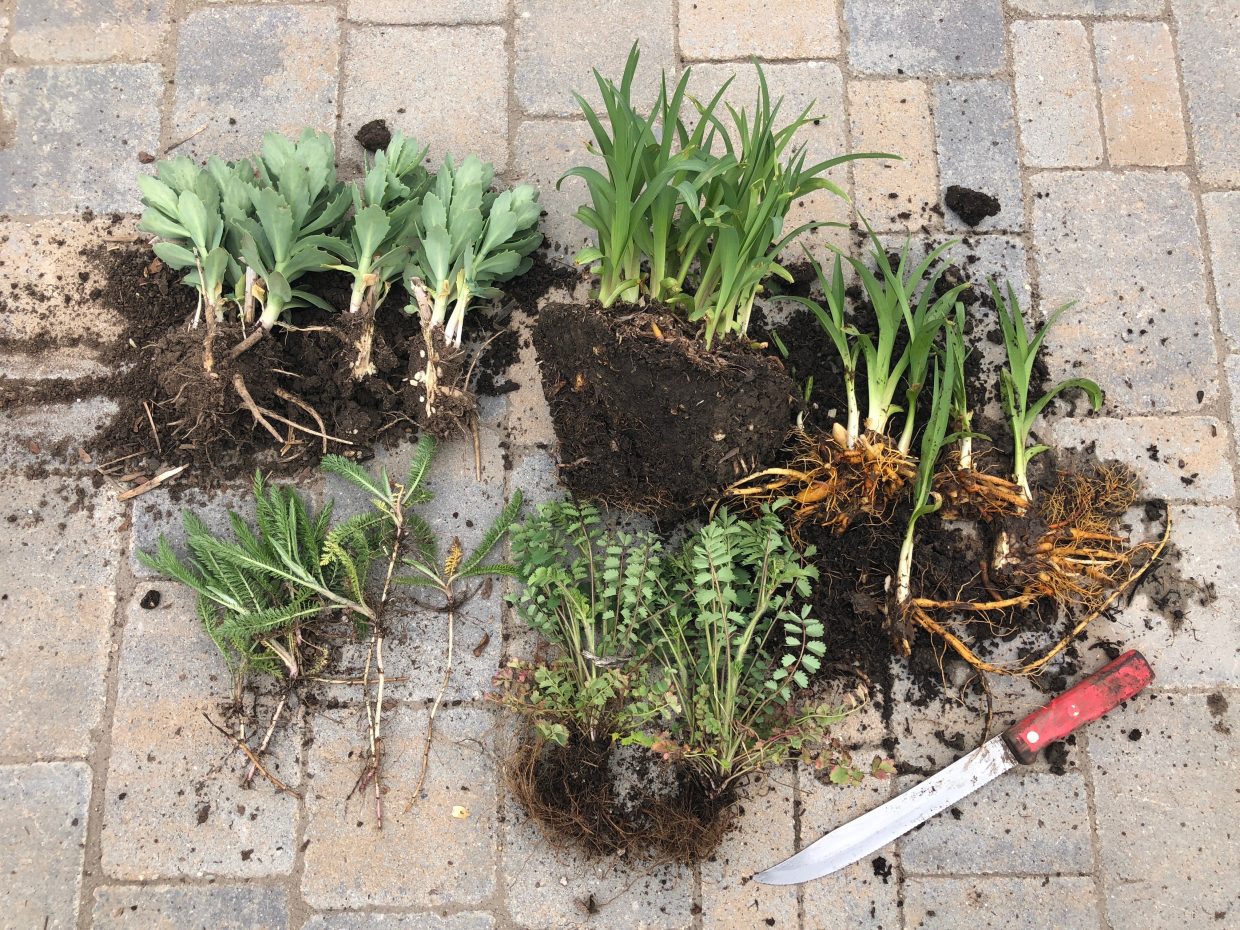Most perennials in Bedford gardens benefit from being divided every three years or so. It may seem like a daunting task, especially if you have neglected it for a decade, but dividing perennials is a simple task. It requires a little muscle and time but is otherwise easy and well worth the effort.
Why Divide Perennials?
One of the great things about growing perennials in the garden is that they come back year after year, no matter what you do. They are generally low maintenance, but a little work is required to keep them healthy and looking nice.
Division is an important task because perennials get crowded over time. New shoots develop each year, growing their own roots, crowding the other plants, and competing for nutrients, water, and sunlight. If it’s time or past time to divide a clump of perennials, you’ll see the signs:
- The plants look crowded into a large clump.
- Take a look at the individual stems; they will be small and weak compared to how they have looked in the past.
- You will see fewer flowers.
- The leaves may turn yellow, and some plants will even die.
Perennials to Divide in Fall
Most perennials benefit from a three-year schedule of division. Some species like being divided every year, while others never need to be divided. Look up the appropriate division times before getting started.
There is also a right time of year to divide and replant perennials, and for those that bloom in spring, the time is now. Some of these can also be divided in the spring or summer, but most important is to divide once the blooms are done.
How to Divide Perennials
Set a side a few hours for this chore, or more depending on how many plants need division. Wait for a day with cooler temperatures and cloud cover. The soil should be moist, so give them a good soaking the night before digging up the roots. The plants can get stressed if it’s too hot or dry.
Dig up a clump of plants using a spade, shovel, or garden fork. The fork is particularly useful in pulling up roots without doing damage. How you divide the clump depends on the root system:
- Spreading roots. These are easy to pull apart with your hands or the fork and are shallow in the soil.
- Clumping roots. Clumped roots are thicker and fleshier and grow down more into the soil. You will need to dig deeper for these. Cut the crowns into pieces, making sure each section has a few buds and roots attached.
- Rhizomes. These are actually underground stems that spread outward. Use a sharp knife to cut them into pieces with leaves and buds on each one.
Keep the separated segments in the shade and moisten the roots until you can get them planted in a new location. Replant as soon as possible and water them right away. This is also a good opportunity to work nutrients into the soil. Add fertilizer or organic matter to the new and old locations.
Dividing perennials can be an all-day project, and you’ll definitely break a sweat. But this is a worthy chore that will keep your plants healthy and blooming for years to come.






